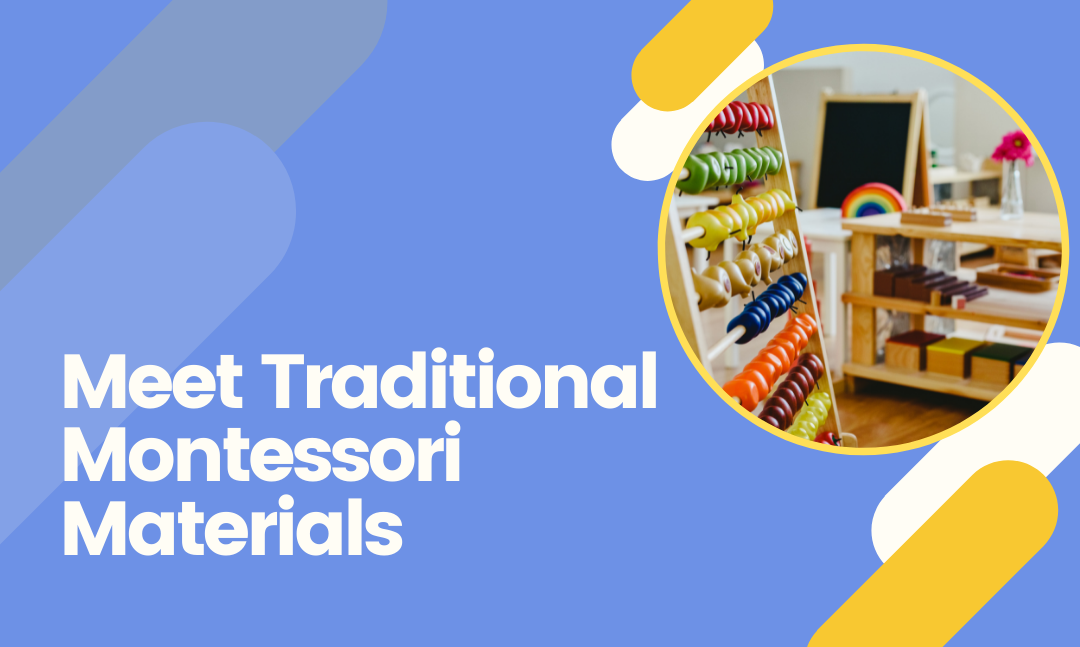Montessori materials look different from materials in traditional American classrooms. If a person unfamiliar with the Montessori Method stepped into a Montessori environment, they might feel like they’ve entered a classroom from the early 20th century. The funny thing is that they’re not too far off!
Like the Montessori Method itself, Montessori materials haven’t changed much since Dr. Maria Montessori developed her educational model more than a century ago. Her ideology centers around the biological development of the child, which hasn’t changed since the dawn of humanity. So, it only makes sense that the materials and methods used in a Montessori classroom have remained consistent.
What makes Montessori materials distinct? We break down not only the physical qualities that make them stand out, but how they are used within the method to aid the educational process.
Montessori materials are manipulative to promote idea building and physical skill development.
Especially in the younger environments, all of the materials are manipulative. All that means is that a child can create a desired outcome by physically touching and moving the material. If you’ve ever helped a baby fit a cylinder through a round hole, then you’ve used a manipulative material!
Manipulative materials are great for idea strengthening and physical skill development. In the primary environment, children use wooden geographic puzzles to learn about continents, topography and geography. As they’re fitting countries together on the map, they are also developing fine motor skills. With each piece that they pick up and place, they’re reinforcing both abstract ideas and physical skill development.
Montessori materials are naturally composed.
The Montessori Method was developed in the early 1900s, long before plastic was widely used in children’s toys. This means that many (but not all) of the materials you see in a Montessori classroom are composed of natural materials that were more common at the time. Most often, materials are made of wood, metal, ceramic and glass.
A great example of this is the pouring station commonly found in the toddler and primary environments. This station features child-sized ceramic or metal pitchers. Children fill the pitchers with water, rice, sand or other transferable substances. They then practice pouring the substances from one vessel to another! Like the first example, this Montessori material uses natural substances to teach lessons about hand-eye coordination, volume, states of matter (liquid vs. solids) and much more.
Montessori materials engage the senses – especially touch.
In the two examples above, we’ve talked about substances that are warm and textured to the touch like wooden puzzle pieces; smooth, cool surfaces like those of a metal pitcher; and coarse, granular substances like sand. Each of these materials is a unique sensory experience for children. On a given day, students will explore a classroom with their hands, manipulating materials that feel, weigh and respond differently to our touch. This engages a child’s senses and supports sensory education.
Montessori materials are purposeful. Each is included in the environment to meet a specific developmental goal. With the support of well-trained guides, students are free to move and explore these materials at their own pace. Want to see these materials in action in a classroom? Schedule an appointment to visit the Maria Montessori School today!

